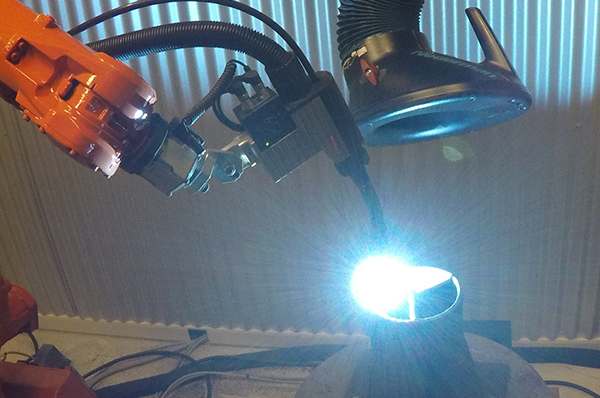TiDA 3D metal printing now only limited by imagination
TiDA in Tauranga can print big. Really big. Having recently commissioned New Zealand’s first Wire Arc Additive Manufacturing (WAAM) system, which prints large metal parts from low-cost welding wire, TiDA Chief Executive Dr Mike Fry says what they can print now is only limited by the imagination.
“WAAM is for larger, heavier, less finely detailed objects than our other established 3D printing processes – stuff you wouldn’t want to drop on your toe. WAAM offers new flexibility for manufacturing industrial, architectural and sculptural items,” says Mike.
To prove the point they printed up an 11kg Roman amphora – the vessel is impressively beautiful and used only $33 worth of mild steel.
“In a display of the technology in Amsterdam, MX3D printed a stainless steel bridge last year for a canal crossing – 4,500kgs, 12.5m long and 6.5m wide. The thing is a work of art. It is literally a crossing into a new industrial age.”
3D printing of metal parts has developing rapidly in the last decade, with now established production of high-value parts and progressing into larger volume and regulated markets such as aerospace and automotive.
The new WAAM system is capable of building parts from 1 to 1000+ kg at up to 3kg per hour.
Amazingly, WAAM is an old idea where the technology has finally been developed to make it a commercial reality – it was first patented in 1926 by a man named Baker: “The use of an electric arc as a heat source to generate 3D objects depositing molten metal in superimposed layers”
“Baker used a new technique to build a 3D object using welding. So, you could say, this is the oldest known attempt to use welding technology in additive manufacturing.”
Unlike the tech available in 1926, WAAM has been made practical, with modern robot/welder hardware and sophisticated software, developed originally to support aerospace activities. New Zealand is an early adopter of WAAM, with the first commercial beta systems only becoming available this year.
The TiDA WAAM system uses a 1.8m reach 6 axis industrial robot, and a cold-metal-transfer welding system (CMT – an advanced form of MIG) to deposit material.
Parts up to 250kg and 1m tall can built on a 2 axis part manipulator that works in coordination with the robot arm to enable the building of complex overhang features without support structures typically associated with other forms of 3D printing. So, not only is the feedstock cheaper, but replacements for castings, etc. can be printed without the cost associated with tooling.
Initially aimed at high-value titanium and aluminium parts for aerospace, most materials that can be wire-arc welded offer potential for WAAM. The extended options include a range of low-cost and specialist steels, stainless steels such as 316L, inconel, and bronzes. Wire feedstock prices ranging from $3 to $100 per kg, make WAAM parts much lower cost than those printed from powders.
“Based on a welding process, WAAM can print features directly onto existing cast, fabricated, or billet structures where materials are weld compatible. In conjunction with 3D scanning of damaged parts, more extensive repairs are made possible, raising the threshold of damage that can be repaired before more expensive replacement is needed,” says Mike.
For more information about TiDA, please see their website.
Date posted: 28 November 2019

